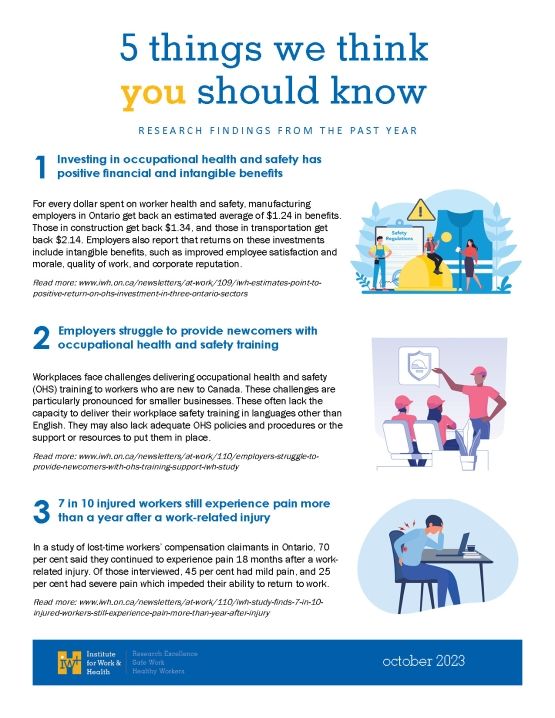
Investing in occupational health and safety has positive financial and intangible benefits
For every dollar spent on worker health and safety, manufacturing employers in Ontario get back an estimated average of $1.24 in benefits. Those in construction get back $1.34, and those in transportation get back $2.14. Employers also report that returns on these investments include intangible benefits, such as improved employee satisfaction and morale, quality of work and corporate reputation.

Employers struggle to provide newcomers with occupational health and safety training
Workplaces face challenges delivering occupational health and safety (OHS) training to workers who are new to Canada. These challenges are particularly pronounced for smaller businesses. These often lack the capacity to deliver their workplace safety training in languages other than English. They may also lack adequate OHS policies and procedures or the support or resources to put them in place.

7 in 10 injured workers still experience pain more than a year after a work-related injury
In a study of lost-time workers’ compensation claimants in Ontario, 70 per cent said they continued to experience pain 18 months after a work-related injury. Of those interviewed, 45 per cent had mild pain, and 25 per cent had severe pain which impeded their ability to return to work.

Racial and ethnic inequities persist in the return-to-work process
Following a non-work-related injury or illness, non-white workers are less likely to return to work than white workers. That’s according to a review of the research to date on racial and ethnic inequities. Some evidence indicates that Black workers face particularly pronounced obstacles to returning to work

Workers doing vigorous, tiring activity all day no healthier than those who are least active
Canadian workers whose daily routines involve some movement have better heart health than those who are mostly sedentary at home and work. But there’s one exception. Workers who do vigorous physical activity throughout the workday—likely in physically demanding jobs—have the same heart disease risks over 10 years as the most sedentary.
